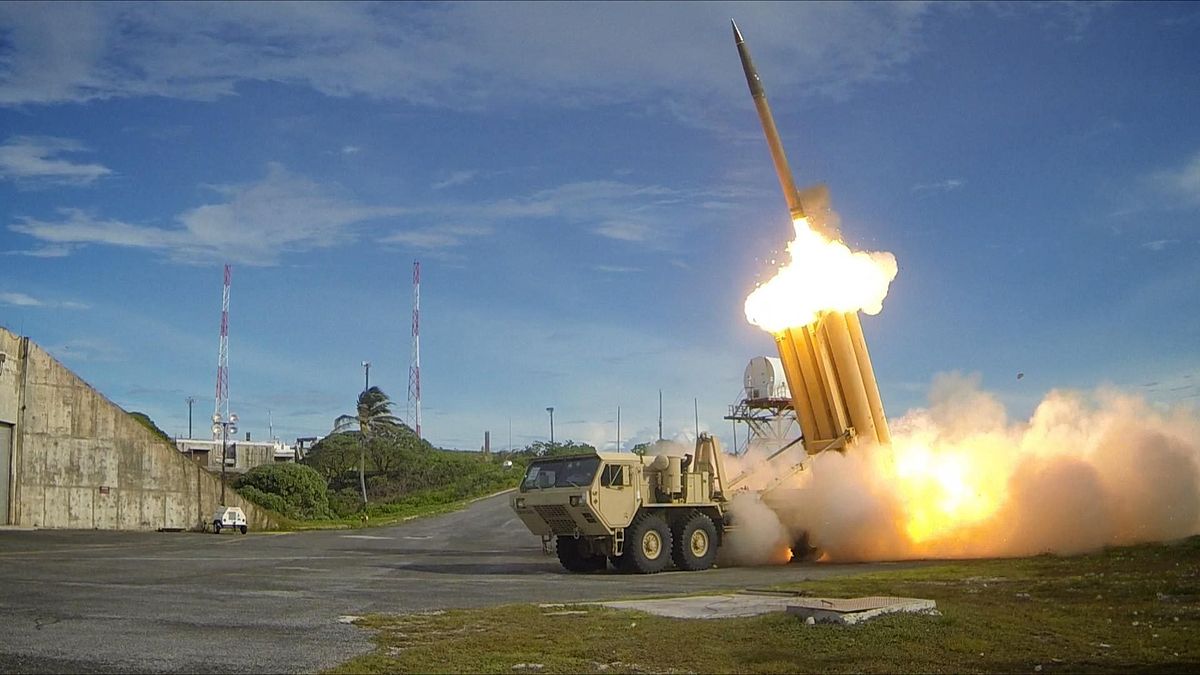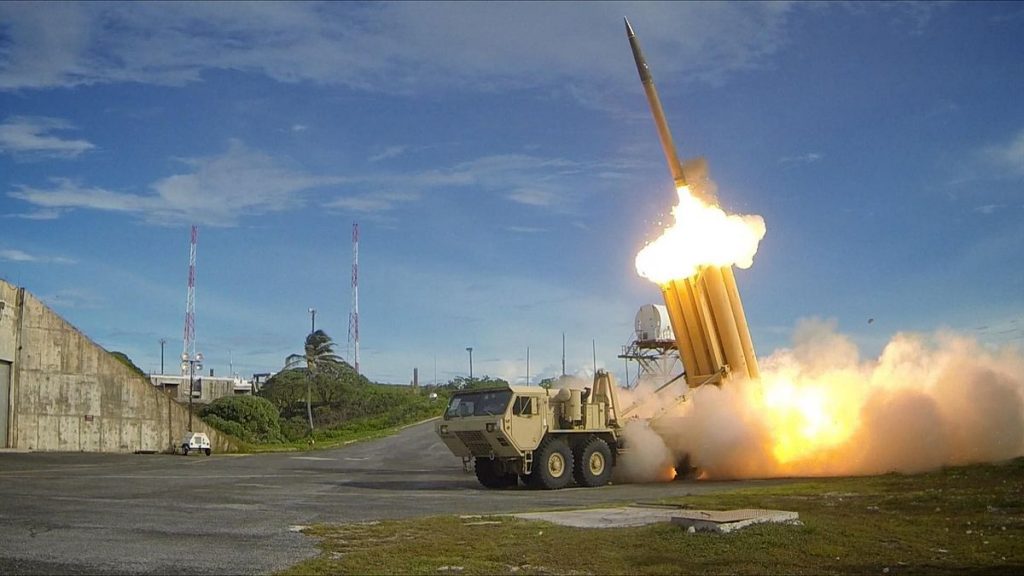Sourced : Korean Times
By Jun Ji-hye
Seoul and Washington have started the controversial deployment of a U.S. anti-missile defense system here, with two missile launchers and other equipment arriving here Monday night.
The first batch of equipment of the Terminal High Altitude Area Defense (THAAD) battery landed at Osan Air Base in Pyeongtaek, 70 kilometers south of Seoul, on a C-17 transport aircraft, the defense ministry and the U.S. Forces Korea (USFK) said Tuesday.
The equipment will stay at an undisclosed location until a golf course in Seongju County, North Gyeongsang Province, is ready to host the battery.
The delivery of the remaining equipment and operational personnel will follow gradually to fulfill the alliance decision on the deployment made in July last year.
A THAAD battery consists of six truck-mounted launchers, 48 interceptors (eight per launcher), a fire control and communications unit, and an AN/TPY-2 radar.
“Work to deploy THAAD has begun,” a ministry official said, declining to be named. “South Korea and the United States will deploy the system at the earliest possible date.”
Sources said the anti-missile battery would be deployed in two months if the rest of the parts are moved in smoothly, with the unit going operational as early as April.
The system was initially expected to be installed after June.
The two countries have made every effort to deploy the system as soon as possible to better deter evolving threats from North Korea’s nuclear and missile programs, the ministry said.
The swift move is unrelated to Seoul’s ongoing political situation, including an imminent court decision on the impeachment of President Park Geun-hye and the possibility of an early presidential election, it said.
The ministry also said the delivery of the first elements has “nothing to do with ongoing joint exercises,” downplaying speculation that the equipment came to participate in the Foal Eagle military drill.
The elements are thought to have come from Texas as one of the four THAAD batteries stationed there was expected to be deployed to South Korea, sources said.
On Monday morning, Pyongyang fired four ballistic missiles, presumed to be Scud-ERs (extended range) with a range of 1,000 kilometers, in an apparent protest against the allies’ joint exercise. The launches came 22 days after the testing of a new intermediate-range ballistic missile.
“Continued provocative actions by North Korea, to include yesterday’s launch of multiple missiles, only confirm the prudence of our alliance decision last year to deploy THAAD to South Korea,” said Adm. Harry Harris, commander of U.S. Pacific Command. “We will resolutely honor our alliance commitments to South Korea and stand ready to defend ourselves, the American homeland and our allies.”
USFK Commander Gen. Vincent K. Brooks also said, “The timely deployment of the THAAD system by U.S. Pacific Command and the Secretary of Defense gives my command great confidence in the support we will receive when we ask for reinforcements or advanced capabilities.”
The ministry official noted that the government did not notify China in advance of the start of the deployment.
On Feb. 28, the defense ministry signed a land swap deal with Lotte Group to locate the THAAD unit on a company-owned golf resort in Seongju. In exchange, Lotte will receive a piece of military-owned land in Namyangju, Gyeonggi Province.
The ministry is currently working on land provision to the USFK in accordance with the Status of Forces Agreement, construction planning and the evaluation of the THAAD battery’s environmental impact. Most parts of the processes are proceeding simultaneously to reduce completion time, it said.
“We cannot confirm exactly when the deployment will be completed because of security concerns,” the official said.


